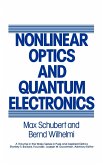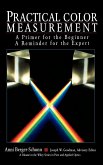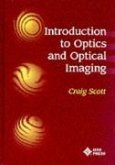Nonlinear optical media have already opened up a universe rich in technological possibilities. Holograms can be recorded and erased in these media. And nonlinear optical media, such as photorefractive crystals, are highly efficient, particularly for wave mixing and phase conjugation. To make effective use of these media for the transmission and manipulation of optical information requires a clear understanding of the theory at the root of the entire phenomenon. Designed as a reference for advanced students in the area of modern optics for electrical engineering and applied physics, Introduction to Photorefractive Non-linear Optics not only sheds light on the field's basic underlying theorem but also clearly links it with practical applications, forming the first introductory textbook to balance both. While clearly illuminating such practical applications as optical computing and neural networks, the book's emphasis throughout is on the theory of the propagation of optical waves and the mixing of electromagnetic radiation in nonlinear optical media. In a progressive format that moves from the elementary to the complex, the book begins with the basics of electromagnetic waves and periodic structures, examining the physics of photorefractive effects and the mixing of waves in these media. Classical electrodynamics is used to describe the mixing of waves in photorefractive media. Concepts in elementary solid state physics are also used to clarify the discussion on the transport of charges in photorefractive crystals. Following chapters take an in-depth look at optical phase conjugators and photorefractive resonators. The fundamental principles of gratings and holograms are examined inchapters 7 and 8. The manifold applications in optical information processing, optical interconnection, and neural networks are clearly detailed in the following three chapters. The last chapter is devoted to a timely look at the higher order photorefractive effect in optical fibers. The result of the collective research and development conducted by scientists over the years at the Rockwell International Science Center, this important reference is an unprecedented inside look at the innovations at the technology's leading edge. Illustrating theory with useful numerical examples based on real situations, the book provides students with a clear practical grasp of the essentials of the science as well as the technology's day-to-day applications. Not simply a monograph, Introduction to Photorefractive Nonlinear Optics is, instead, a comprehensive introductory guide to understanding - and using - this fascinating evolving technology.








